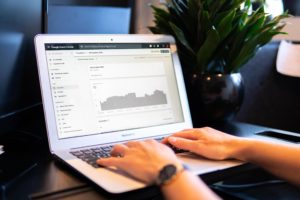When it comes to bookkeeping, have you ever wondered if you’re “doing it right?” Keeping track of inventory, refunds, and other moving parts can be challenging for eCommerce sellers. Whether you’re running a brick-and-mortar or any eCommerce business, you should keep and refer to many financial statements, and one of which is your ― profit and loss (P&L) statement. Nothing shows your business’ success more clearly than a P&L statement.
But what is the P&L statement? How do you calculate it, and why is it so important? Below you will find answers to these and other frequently asked questions.
Let’s get rolling…
What Is a Profit and Loss Statement?
The profit and loss statement, or P&L statement, is a financial report that summarizes a business’ total income and expenses over a given period. It serves as a means of measuring a company’s profits by subtracting its expenses from its income and giving an overview of its financial health.
The profit and loss statement tells you whether or not your business is profitable. Using a P&L statement, small business owners can identify areas for improvement and new growth strategies.
Typically, a profit and loss statement is evaluated over the following periods:
- Annually
- Quarterly
- Monthly
Simple P&L statements can be created using only a few lines, making them very easy to understand. Others can span pages and be quite complicated. That depends on the complexity and size of your business.
The profit and loss statement will be short for a small business with few income streams or expenses, whereas for a large business with many income streams, it will be longer.
What Is Included In a P&L Statement?

Profit and loss statements illustrate how a business’s revenues and expenses have changed over time. A P&L is usually composed of the following components:
- Revenue: Revenues from sales of products and services and income from sources outside your business, such as rent and interest, fall under this category.
- Gains: Usually, these are one-time events such as selling off goods attributed to business profits.
- Direct Cost: This includes raw material costs, shipping costs, inbound and outbound shipping charges, and any costs directly related to sales generation. Direct costs are also known as the cost of goods. As a direct cost, it’s a price that is directly related to the manufacturing of specific goods you sell, so it fluctuates with production levels and inventory levels.
- Losses: Much like gains, these are one-time costs or events that represent a loss for the business, like paying a settlement in a lawsuit.
- Net income: In a profit and loss statement, this is called the “bottom line.” Net income is calculated by adding up all revenue and gains and subtracting expenses and losses. A financial statement contains these numbers that can be used to analyze and monitor your business’s financial health.
You can include other categories on your P&L statement, such as:
- Expenses and income related to interest: Interest expense refers to your loan interest payments. Interest income comes from interest-bearing accounts, such as certificates of deposit.
- Income taxes: There are three types of income taxes: federal, state, and local taxes.
- Earnings per share (EPS): It calculates how much money shareholders would receive if your business distributed its net income. You will have earnings per share (EPS) if your business has shareholders.
Choosing an accounting method is also important when setting up your Profit and Loss Statement. To recognize revenue, there are two methods: Cash basis and Accrual basis.
- Cash basis accounting: A cash basis accounting statement shows revenues as customers receive them on a P&L statement.
- Accrual basis accounting: In this method, when revenues are earned, they appear on the profit and loss statement. It is considered more accurate to use the accrual method because it complies with GAAP.
How Do I Read a Profit and Loss Statement?

P&L statements have many components, account labels, and accounting methods. However, their real significance and value come from how you read and analyze the data. A business owner with a background in accounting or bookkeeping can easily read the P&L statement by looking at the net profit (the “bottom line”) to determine if the company is profitable.
However, if you’re having trouble understanding the numbers, speak with an accountant. Using their services, you can better understand your revenue flow, profitability pitfalls, and costs to cut.
Some things to consider when reviewing a P&L are listed below:
1. Take a look at your bottom line.
Even if you don’t have much understanding of the Profit and Loss statement but want to know if is your business doing well ― then take a look at your bottom line. The last line in your P&L indicates whether you’re “in the black” (earnings exceeded expenses) or “in the red” (expenses exceeded earnings).
It is always good to celebrate a net profit. However, when starting out, a net loss isn’t necessarily a sign of trouble. Losses can, however, be a sign that certain areas need to be addressed to prevent them from becoming habitual.
2. Take a look at your expenses and income streams.
It’s a good idea to examine your income streams and expenses after you determine whether your business has made money or not. Is the revenue you generate aligned with the goals you have for your business? Do they increase one time or continuously? Furthermore, were your expenses reasonable during the examined period?
You should review any ongoing costs you may have to reduce if your business had a net loss (ex., holiday inventory, planned expansions, etc.).
3. Make a comparison.
Compare your profit and loss statement to previous periods to determine if there is a shift or irregularity.
To determine whether you’re on track to reach your goals, check your percentage increase or decrease for each category. It may be the same for expenses as well. By making comparisons, you will better understand how your business is doing and what needs to be changed.
4. Be sure to double-check your calculations.
Double-check your numbers before you build and review your P&L statement, whether you’re using bookkeeping software or an Excel spreadsheet. Data entry errors can sometimes have a negative impact on your bottom line. Reviewing your previous statements can also help in this process.
How Often Should I Look at my P&L?

Make it a goal to review your profit and loss statement frequently (at least every month) to see if you need to make any changes.
If you own a small business, are a partner in a small firm, or are the CEO of a closely held corporation, you need to know pretty well what your business is doing. A monthly or quarterly review may be helpful. As a result, you can keep track of profits and satisfy investors’ needs.
There are also times when you need to look at your P&L statement: during a new product launch, tax season, venture into a new market, or when a new competitor enters the market.
Why Is My P and L Important for my Business?

A P and L statement is an important part of your business. It helps you assess your financial situation and make decisions that impact your financial future.
Profit and loss statements can help you:
- Creating a chart of accounts for the business
- Provide shareholders with a financial overview of your business
- You’ll gain insight into the net earnings of your business (either positive or negative)
- Verify whether new ventures will be profitable if you try new products or services
When Should I Hire Someone to Create My Profit and Loss Statement Each Month?

Having basic financial literacy is important for business owners. You will be able to understand the story the numbers are telling. Moreover, the creation of a P&L statement isn’t difficult, and it is something you can do yourself.
However, you may not have the time or expertise to compile these documents by yourself. For that―you may need to hire some bookkeeping professionals.
That will make things much easier for you, and you won’t have to worry about the accuracy of your financial statements.
But when should you hire someone to create your profit and loss statement? Well, keeping a record of your financial statements is a continuous process, and you will have to hire a professional from the very start who can monitor your business’s finances. Then you can analyze your P&L statements monthly, quarterly or yearly.
Wrapping Up
P&L statements can help you assess big-picture challenges and opportunities within your business infrastructure, regardless of whether financial conditions are improving or deteriorating. However, as a business owner, it may feel overwhelming to create, read, interpret, and analyze a P&L statement.
At EcomBalance, we offer professional bookkeeping services and welcome the opportunity to assist you in developing a plan to prepare your monthly P&L and other financial statements and interpret the data. By the 15th of every month, we will provide you with P&L and additional analysis so that you can make smart decisions as your business grows.
Give us a call at 1 (720) 278-7838 to schedule a free consultation! Or sign up for a free pricing quote and we’ll get it over to you within 1-2 business days.
About EcomBalance
EcomBalance is a monthly bookkeeping service for eCommerce companies. EcomBalance handles your bookkeeping and sends you a Profit and Loss Statement, Balance Sheet, and Cash Flow Statement by the 15th of each month. EcomBalance also has a sister company, AccountsBalance, that caters to agencies, software companies, coaches, and other online companies.









